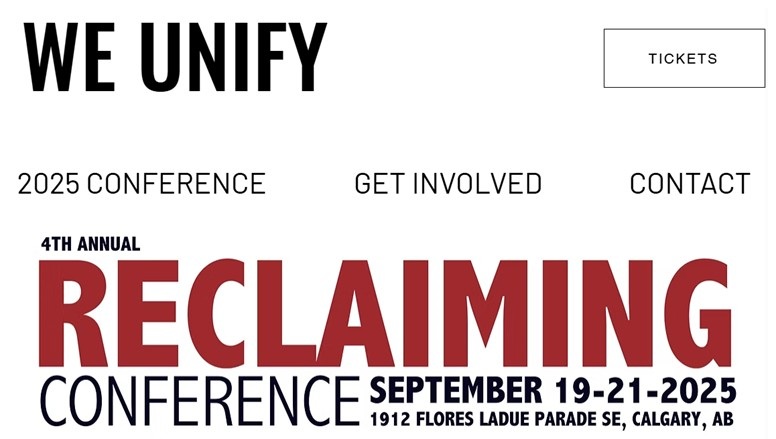|
COVID Mandates - Mindful Neglect |
DIRECTORY | ||
|
Contributions: Justa Chat - A Conversation About Engaging Youth |
Action: Help sustain KEI's contributions |
Fact or Fiction?
Private Humour Trumps Public Angst |
|
|
Editor - Perry Kinkaide |
COVID Mandates - Mindful Neglect is the first of five episodes of our series Youth At The Crossroads. Each weekly newsletter in the series will explore the impact of recent events serving to shape the concerns and aspirations of our youth - the next generation. The associated webinars engage our newly formed Youth Advisory panel for digging deeper into the recent impacts of COVID, over-protection, social media, and now AI, concluding with an episode on governance and "Where from Here?". We start first exploring the impact of the man-made COVID mandates. What if the greatest harm to our youth wasn’t the virus—but the mindless masking and isolation, our silence? COVID Mandates – Mindful Neglect explores how well-intentioned policies sidelined a generation, forcing resilience where support was needed. It’s time to reckon with the cost of caution and the voices we failed to hear. - Editor |
||
|
COVID Mandates - Mindful Neglect. Youth, Resilience, and Recovery The impact of COVID-19 and its associated mandates has been profound. While the virus itself posed comparatively less risk to children and young adults than to older populations, the societal response—particularly government-imposed mandates—left a deeper mark on the minds of youth than the disease itself. School closures, lock-downs, masking, the elimination of extra-curriculars, and prolonged social isolation disrupted the most critical stages of their development. The mind was neglected to save the body - not theirs, but others. As a result, we are now seeing troubling evidence of educational stagnation, social regression, and a rise in mental health struggles that may linger for years.
Youth Disrupted: The Canadian Experience. Canada’s pandemic restrictions were among the most stringent in the developed world. According to the Oxford COVID-19 Government Response Tracker, Canada consistently ranked high in lock-down severity throughout 2020 and 2021, including extended school closures—especially in Ontario, which kept students out of classrooms for over 26 weeks, among the longest anywhere in the OECD.¹
What followed was a silent crisis. Research from Children First Canada revealed that, by mid-2021, suicide had become the leading cause of death for youth aged 10–24 in the country.² Emergency room visits for self-harm and eating disorders more than doubled. The Canadian Pediatric Society and mental health professionals across the provinces issued warnings that the health crisis facing children was “more psychological than biological.”³
The loss was not only emotional—it was intellectual and developmental. A 2022 report by the Canadian Teachers’ Federation showed major setbacks in literacy, numeracy, and student engagement. Teachers across the country reported an increase in behavioral issues, attention deficits, and signs of emotional immaturity among students returning to in-person learning.
The Global Mirror: A Tale of Contrasts. How does Canada's experience compare to other nations? Sweden famously kept schools open for children under 16 throughout the pandemic, reporting no significant rise in child mortality and far fewer learning disruptions.⁴ Finland followed a similar course. While critics warned of the risks, these nations now report fewer long-term psychological and academic deficits in their youth compared to countries with prolonged closures like Canada, the U.S., and the U.K.
Australia, meanwhile, imposed strict lock-downs in cities like Melbourne, but later implemented national recovery initiatives targeting youth well-being, including community reintegration programs and academic recovery grants. Canada, in contrast, has been slower to develop a coherent national strategy for youth post-pandemic recovery, leaving much of the response to provincial discretion.
Silence, Screens, and Solitude. The silence described in "Warning to the Young" also echoes the isolation many youth felt during the pandemic. For a generation that had just begun to assert its voice—on climate change, racial justice, gender identity, and economic reform—mandates imposed a chilling silence. Physical distancing became emotional distancing. - continued below
No need to register. Just Zoom in https://us02web.zoom.us/j/84258596166?pw.. KEI Network's Youth Advisory
A Bachelor of Commerce student at the University of Calgary’s Haskayne School of Business, Vivek is also an award-winning public speaker. His recent experience includes leadership roles with the International Model United Nations Association and Calgary Model UN. He served as Secretary General for Westmount Charter School’s MUN and has volunteered extensively in youth math and coding education. Vivek’s work is anchored in democratic citizenship, institutional trust, and youth-led collaboration. He has received multiple Model UN Best Delegate awards and continues to champion the inclusion of youth voices in civic and institutional processes.
As the founder of Yoga Nova Studio (2017–2024), Natalie developed leadership programs blending classical yoga philosophy with modern self-development tools. Since 2023, she has focused on grassroots civic education and youth policy advocacy in Alberta, working to empower young people to lead change in civic institutions and political life.
Recognized for her strategic thinking and cross-sector adaptability, Natalie contributes to community-led policy development and inter-generational dialogue. Her background in both technical industries and personal development supports a uniquely holistic approach to youth empowerment.
With deep roots in his community and a lifelong dedication to its prosperity, Michael uses his platform to inspire youth to engage with climate action, economic development, and Indigenous knowledge systems. He is a strong proponent of energy sovereignty and believes youth can be leaders in building resilient and self-determined communities.
Michael now shares his story through public speaking, encouraging young people across Canada to pursue leadership and innovation. Through both his work and advocacy, he models what it means to create a legacy of environmental responsibility and cultural pride.
Sophia’s work has been acknowledged by the Alberta Legislature, Canadian Senate, and Parliament. She frequently speaks on youth innovation, gender inclusion, and economic participation, encouraging young people to take ownership of their future through STEM and entrepreneurship. She currently leads Key-Angels.com, a platform connecting youth with accessible housing opportunities, and is active in shaping real estate and tech policy. Her impact has reached tens of thousands, and she continues to demonstrate that “Innovation does NOT Discriminate”—championing inclusion regardless of age, background, or lifestyle.
Her work centers on increasing access to science, technology, engineering, and mathematics for underrepresented learners. Rachel collaborates with educators, parents, and policy stakeholders to build learning environments that support engagement, curiosity, and achievement.
Dedicated to practical outcomes, Rachel advocates for student-centered design and co-creation in education policy. Her tools are used widely to enhance classroom learning and after-school enrichment, positioning her as a key voice in youth innovation and inclusive education.
A seasoned writer and public thinker, Emerson has contributed to major publications including The Globe and Mail, The Daily Telegraph, and The Wall Street Journal. His debut novel explores youth identity and solitude in the social media age.
He has served as Chief Strategy Officer at Ditchley Park, where he launched youth-driven programs tackling global challenges, and co-founded the Canadian Ditchley Youth Leadership Challenge. As a mentor and advisor to youth organizations including Global Shapers and CAREERS, he fosters ethical leadership and cross-generational collaboration to address Canada’s most pressing issues. - continued from above In place of classrooms and cafeterias, bedrooms and screens became their world. While technology bridged some gaps, it also blurred boundaries. The increase in screen time—often exceeding 8–10 hours per day—has been linked to declines in cognitive performance, physical health, and sleep quality.⁵ Digital interaction, while convenient, cannot replace the spontaneous, formative social experiences of adolescence.
As one 17-year-old Canadian student put it: “I wasn’t afraid of the virus. I was afraid of forgetting how to be a person.”
From Disruption to Resilience. And yet—despite all this—many youth adapted with remarkable resilience. Some even thrived. Online learning, while disorienting to some, offered others flexibility and self-direction. Youth leaders emerged—on TikTok, in community organizations, in classrooms re-imagined on Zoom—using the tools of the pandemic to build connection, raise awareness, and support peers. One of the most enduring lessons may be that the vaccine which made the most difference for youth wasn’t a pharmaceutical one—it was resilience. The pandemic tested their capacity to endure disruption, re-frame expectations, and respond to instability. And many passed that test with the kind of maturity born not from textbooks, but from lived experience.
These youth are not merely recovering—they are redefining what it means to grow up in uncertain times.
The Future: Fragmented or Forged? What emerges now is a generation marked not by uniformity but by divergence. Some are flourishing; others are floundering. The pandemic deepened disparities between the privileged and the vulnerable. Access to safe home environments, digital connectivity, and supportive adults made all the difference. Public assessments often obscure these differences, but individual trajectories vary greatly. One youth’s crisis was another’s crucible. It is dangerous to generalize. It is more honest—and more helpful—to differentiate: to acknowledge that for some, the years 2020 to 2022 were a time of deep personal stagnation, while for others they were formative. Perhaps this is what the narrator of "Warning to the Young" meant by “nothingness to anecdote to narcissism.” There is a real risk of reducing the complex legacy of COVID-19 to simple soundbites: “Kids are behind,” “Youth are resilient,” “They’ll be fine.” None of these tell the full story.
A Challenge for the Present Generation. For those of us who governed, taught, and parented through this time, our task is not only to analyze but to act. Youth today deserve more than post-pandemic platitudes. They deserve targeted investments: in mental health services, academic support, meaningful employment pathways, and safe public spaces where community can be rebuilt. Equally, they deserve to be heard—not as subjects of adult inquiry, but as co-creators of the future. The KEI Network’s Justa Chat - Youth At The Crossroads series is one such initiative—an opportunity to hear directly from young Canadians about their hopes, frustrations, and vision for the future of work, education, and community.
The past five years may have shaken their foundations, but they have also revealed the contours of tomorrow’s leaders: those who not only endured silence, but now choose to speak.
Let us listen—not only to their words but to the silence we left behind. In doing so, we might begin to transform generational damage into shared resolve. Join us June 19th as we engage youth to better understand the impact of Covid on youth as a clash of public and personal interests. References:
KEI Network invites all readers—youth and elders alike—to join us in continuing this essential conversation. Let the silence end here. Editor@KEInetwork.net
|
|
Sovereignty continues to be in the news, with Alberta taking the lead in exploring the pros and cons. Here is a forthcoming event that may interest you. For more visit WeUnify.ca |



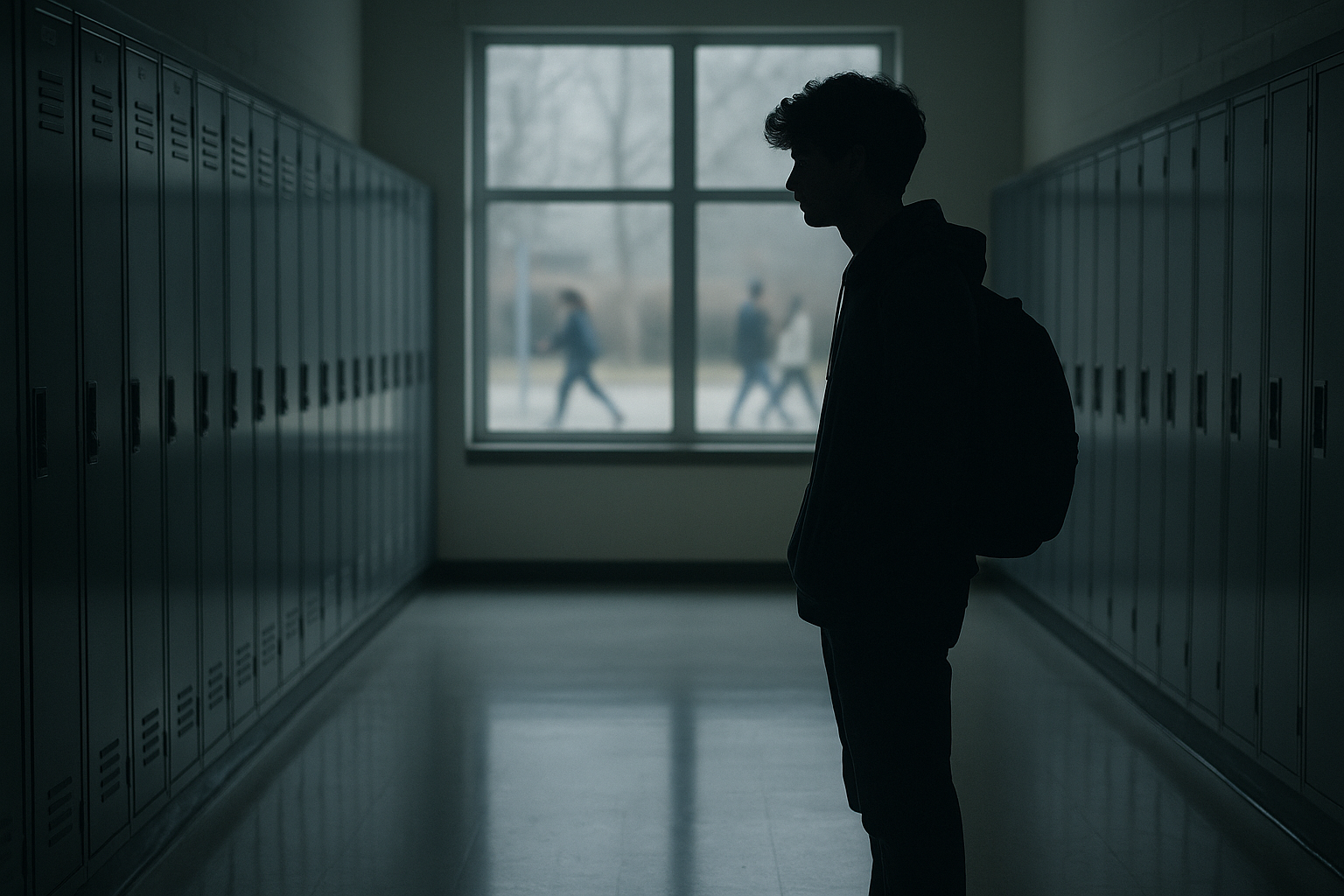

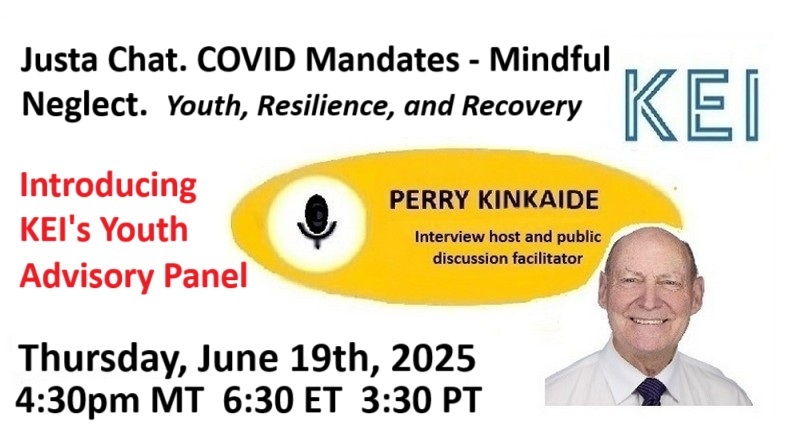
 Vivek Bobby, Founder & President, Youth Policy Council | BCom Student, Haskayne School of Business, University of Calgary.
Vivek Bobby, Founder & President, Youth Policy Council | BCom Student, Haskayne School of Business, University of Calgary. 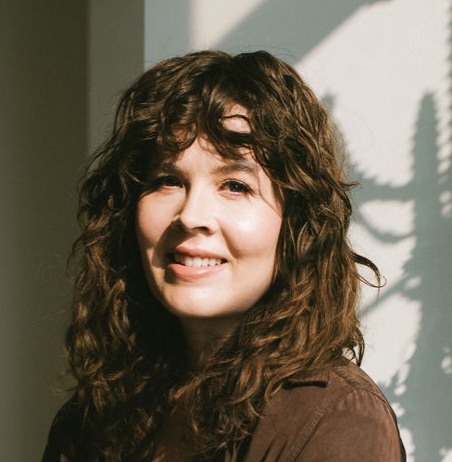 Natalie St. Hilaire, BCom, Law & Economics Candidate, University of Alberta | Youth Empowerment Advocate.
Natalie St. Hilaire, BCom, Law & Economics Candidate, University of Alberta | Youth Empowerment Advocate. 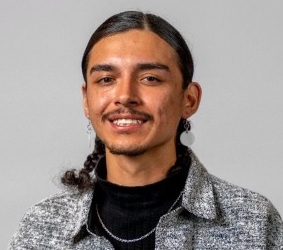 Michael Marty, Clean Energy Manager | Youth Advocate, Frog Lake First Nations.
Michael Marty, Clean Energy Manager | Youth Advocate, Frog Lake First Nations. 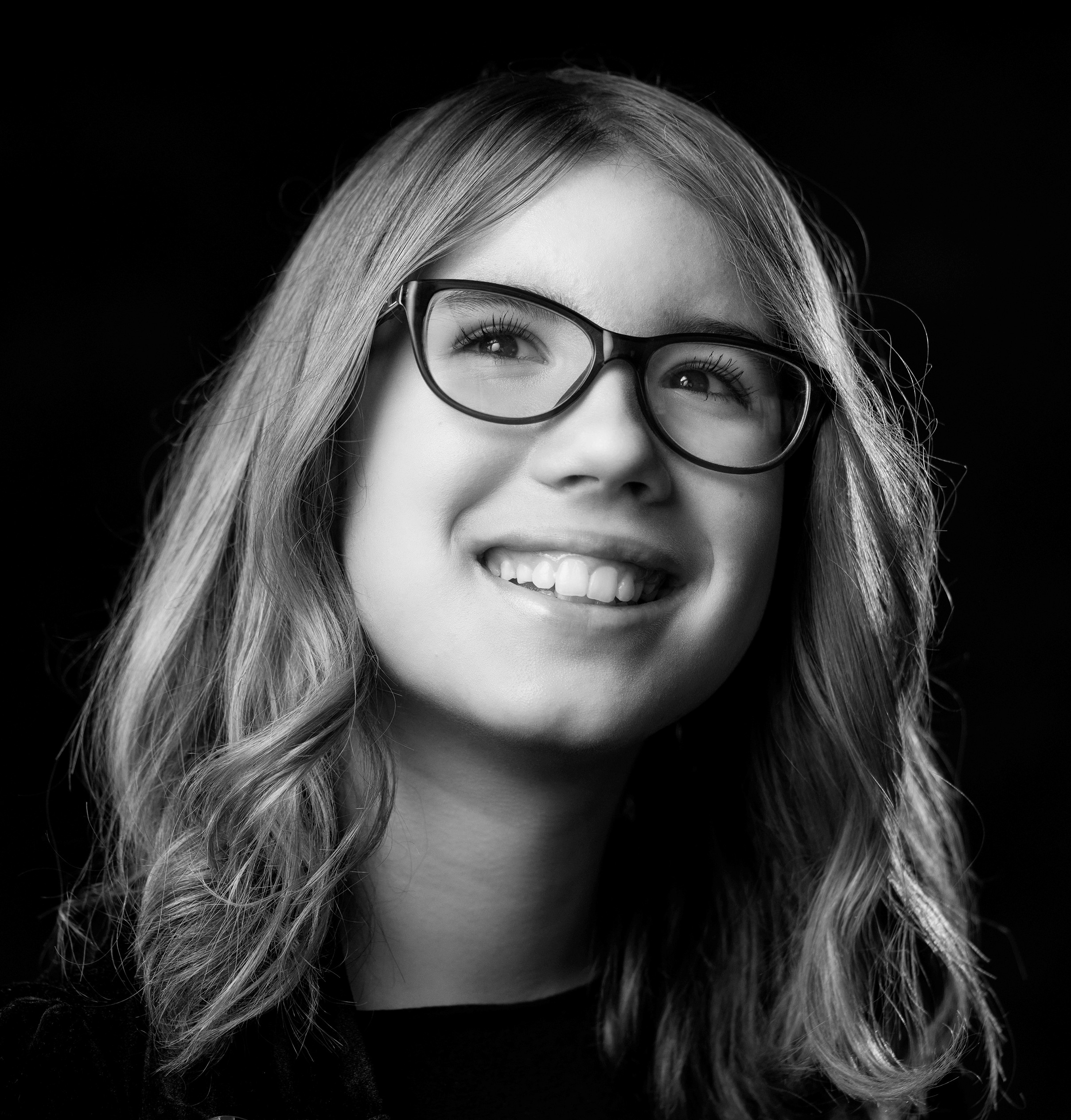 Sophia Fairweather, STEM Entrepreneur | Youth Policy Influencer | Founder, Key-Angels.com.
Sophia Fairweather, STEM Entrepreneur | Youth Policy Influencer | Founder, Key-Angels.com. 
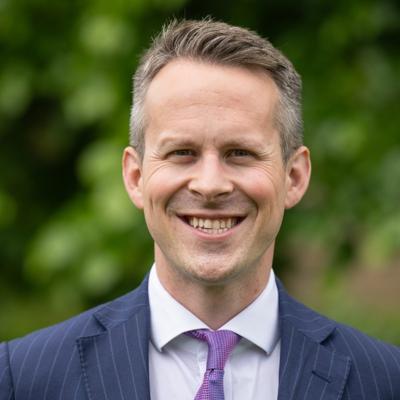 Emerson Csorba, Youth Strategy Leader | Philosopher | PhD, University of Oxford
Emerson Csorba, Youth Strategy Leader | Philosopher | PhD, University of Oxford
